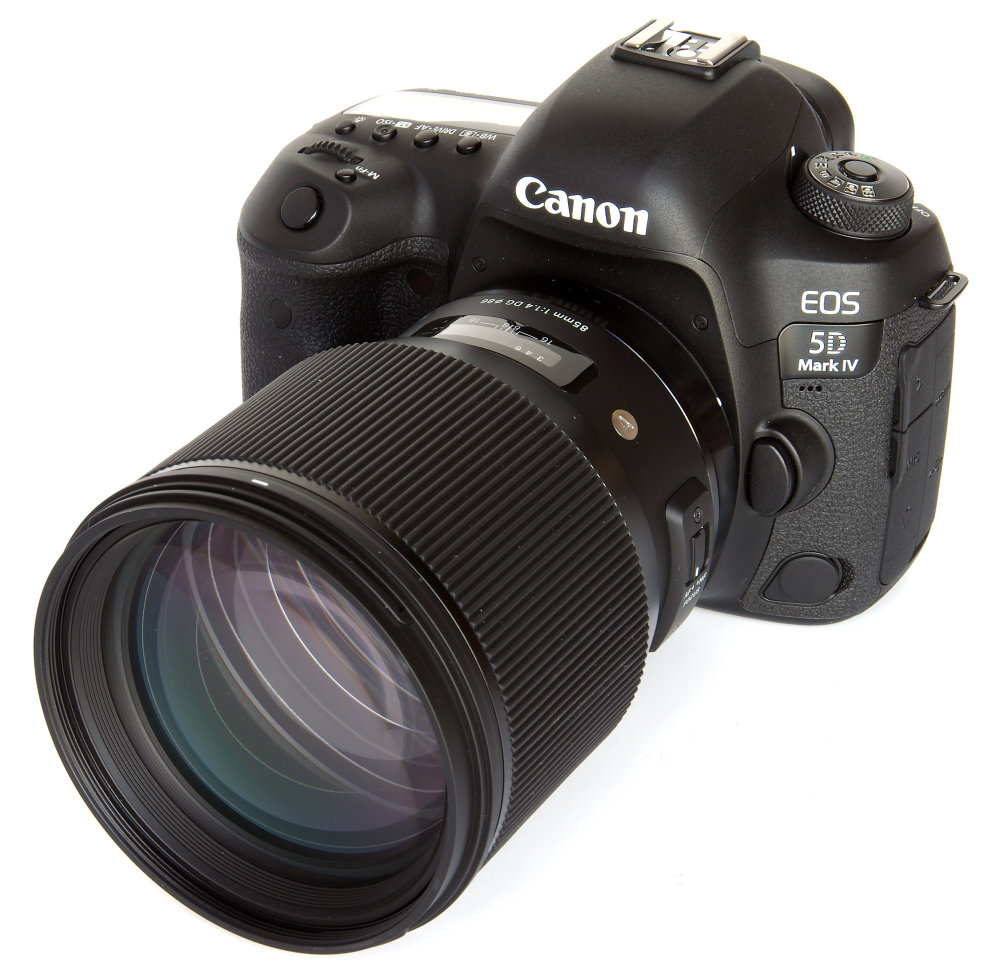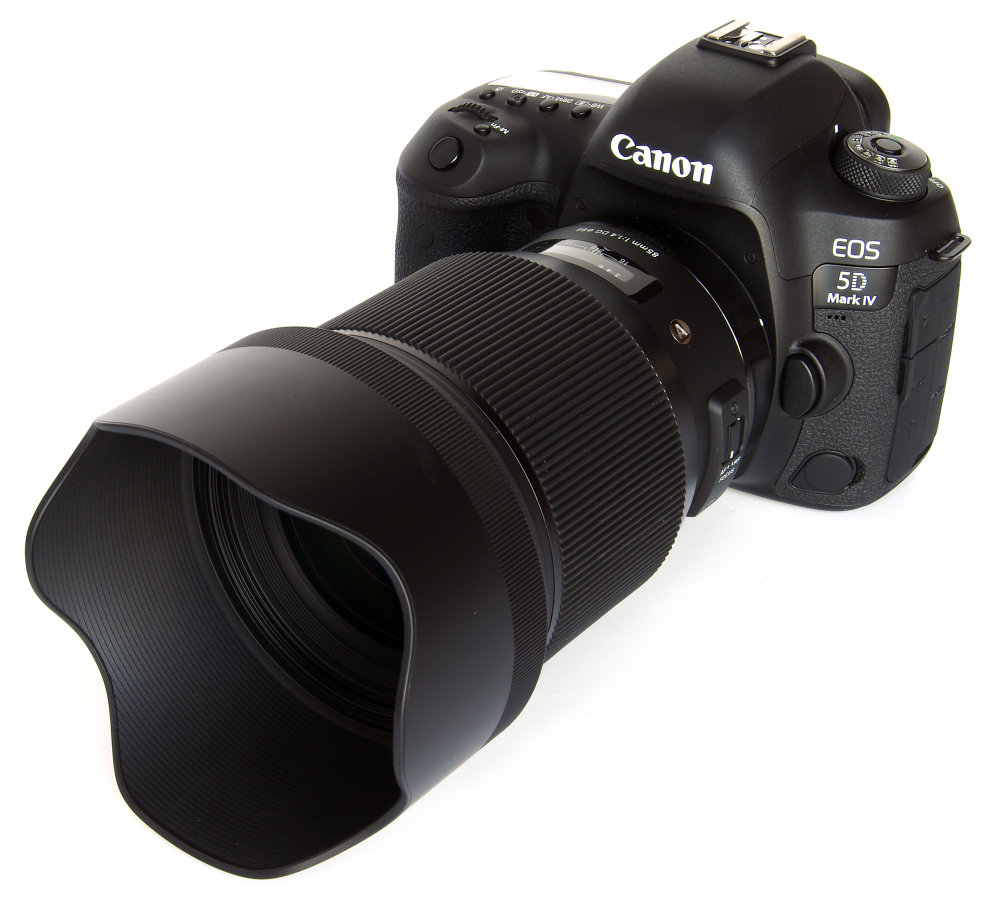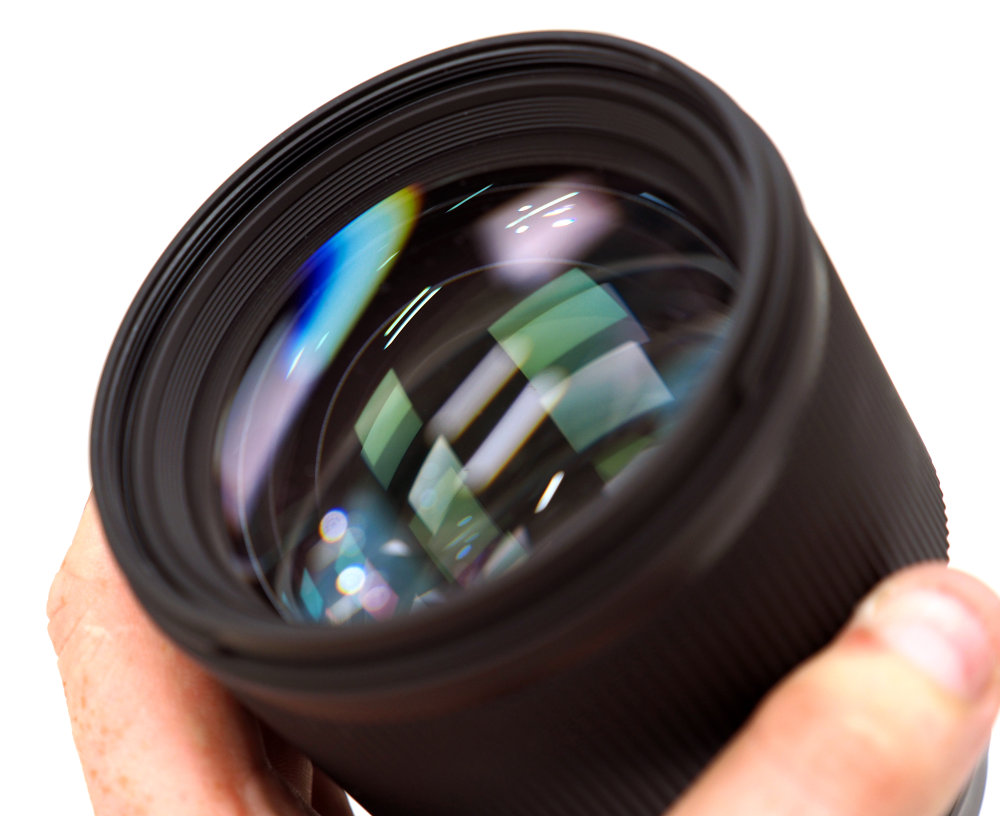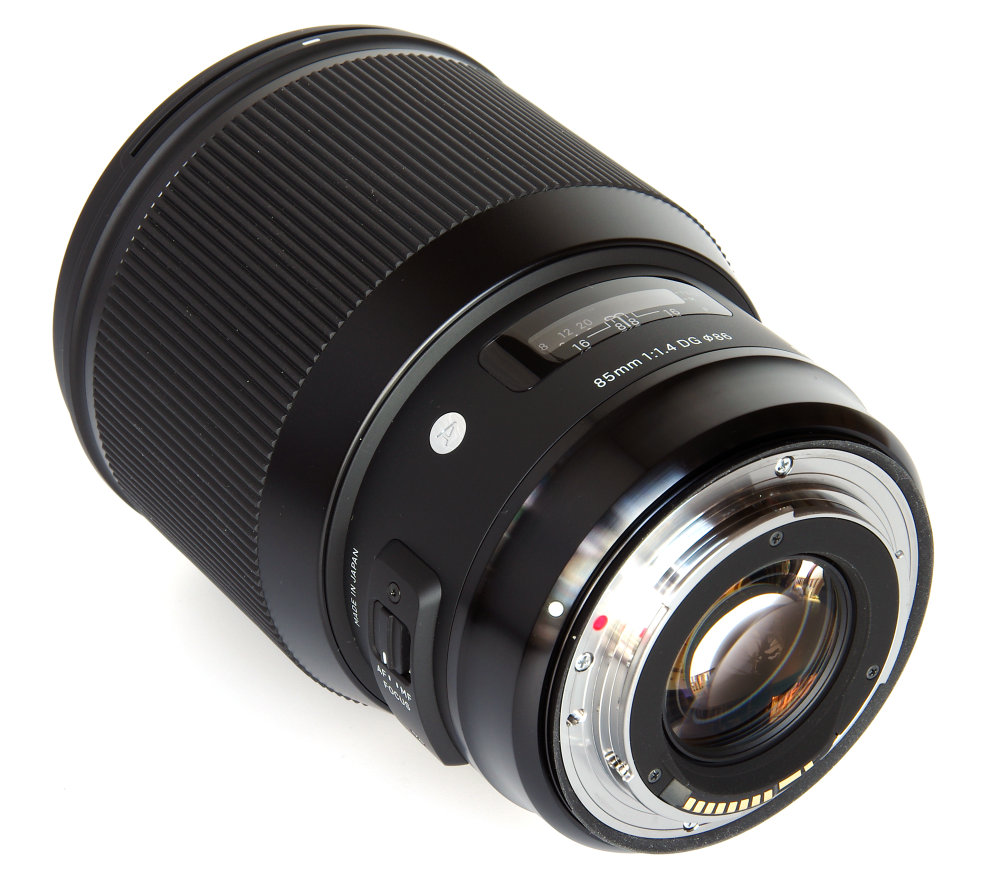Sigma 85mm f/1.4 DG HSM Art Review
Sigma 85mm f/1.4 DG HSM Art Handling and Features
The Sigma 85mm f/1.4 DG HSM f/1.4 Art lens certainly looks the part. It balances well on the Canon EOS 5D Mark IV body used for this review, making its 1130g weight seem very easy to handle and carry for long periods. The quality of manufacture is of a high order and the finish looks impressive. The large plastic petal lens hood offers plenty of protection from stray light, clipping neatly into place via its bayonet fitting. There is also an 86mm filter thread on the front of the lens.
A satisfyingly wide focusing ring operates the internal focusing and although end stops can be felt, it will continue to rotate freely beyond. The lens has further focusing beyond the infinity mark to allow for expansion and contraction as the temperature varies. Focusing is down to 85cm, or 2.79 feet, which is typical for a traditional 85mm lens. This is a magnification of 1:8.5 and although this makes for a close head shot it would be useful if it focused closer. Focusing is via an HSM (hypersonic motor) and is virtually silent in operation, as well as being quick and accurate. This is no doubt aided by the new upgraded motor, which Sigma say has 1.3x the torque of previous models.
Full Time Manual Focusing is available for Nikon and Sigma mounts, where a final tweak can be given manually to the focus point by maintaining a half pressure on the shutter release. The ability to do this can be switched on and off for users who have the Sigma USB Dock and Sigma Optimisation Pro software.
Closer to the camera body we next find just one switch, for switching AF/MF, and the window revealing distance markings in feet and metres. There is a depth of field scale, albeit of limited usefulness in a short telephoto lens. This is because the scale is very short and the depth of field also quite narrow in telephoto lenses, making the scale not particularly accurate.
The nine bladed diaphragm is intended to provide improved bokeh by offering a virtually circular aperture. This is the smoothness and gradation quality that we see in out of focus areas in an image. In the Nikon version of the lens this is an electromagnetic diaphragm that improves accuracy and repeatability of settings, as well as smooth operation for videographers.
The optical construction is 14 elements in 12 groups. There are two FLD elements, which are claimed to have a performance equivalent to fluorite glass. There is also one element with anomalous partial dispersion and a high refractive index. This is a complex design for an 85mm f/1.4 lens, compared to lenses from the film era that might have had as few as 8 elements.
There is no doubt that this is a beautiful lens to handle and use. It is though a pity that there is no weather sealing, nor is there any vibration reduction. However, handling wise it is very easy top focus manually when desired, the image snapping cleanly in and out of the focus point. When using AF the camera/lens combination locks on extremely crisply.
85mm lenses are ideal for portraiture, but also for other short telephoto applications. Landscapes, architectural details, close range sports, night shooting, all fall with the lens's capability. It is easy to see why the 85mm has always found a place in most manufacturers' portfolio of lenses.
Add your message
Please login here or if you've not registered, you can register here. Registering is safe, quick and free.
photodo Stats
428 MTF tests
74 in-depth photodo reviews
100+ users join each day
Help the lens community by reviewing or rating a lens today via our lens search
Latest Lens Reviews
- Chinon 28mm f/2.8 Vintage Lens Review
- Canon EF 70-200mm f/4L IS II USM Lens Review
- Samyang AF 85mm f/1.4 EF Review
- Sigma 70mm f/2.8 DG Macro Art Review
- Samyang AF 24mm f/2.8 FE Review
- Meike 50mm f/1.7 Review
- Tamron 70-210mm f/4 Di VC USD Review
- Lensbaby Burnside 35mm f/2.8 Review
- Asahi Super Takumar 50mm f/1.4 Review
- Asahi Super-Multi-Coated Takumar 135mm f/3.5 Review




